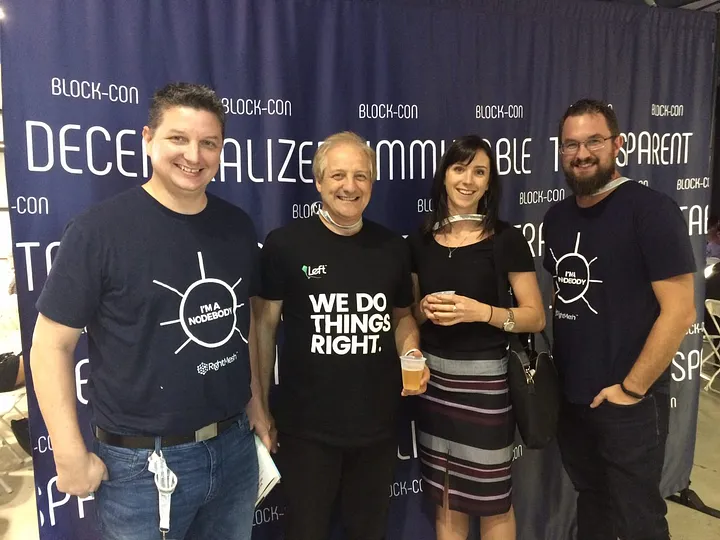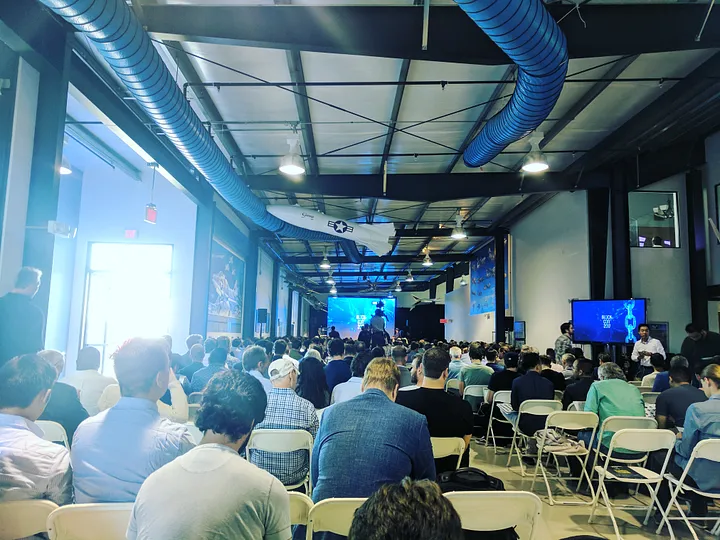After having freshly attended the Blockchain Conference in Santa Monica / Los Angeles I am freshly excited and motivated with all of the cool projects and companies that people are building on blockchain. However, one thing that became very apparent is that many of these solutions neglect one major component to make them truely decentralized. Many people talk about banking the unbanked, creating emergency rescue applications, sports betting, trading platforms and many very awesome applications. However, I always ask, — “What will happen when there are no cell towers, or when people cannot afford access, or when a government blocks access or when a disaster brings down a portion of the cellular network?” and nobody has a good solution to this. For a decentralized solution, we still rely on organizations and entities that run the infrastructure itself. We have freed ourselves of centralized service providers, but not the networks themselves.

The key thing here is that people take for granted that the Internet just exists, and we can all use it. It is a very developed world viewpoint, and one that many people don’t share. People in many parts of the world still rely on SMS services to exchange money. In the same places these people have previously depended on feature phones, however, the cost of Android phones that support Wi-Fi and Bluetooth are coming down to as low as $20. In Q1 2017, for the first time, “[subscriptions associated with smartphones have surpassed those for basic phones. Of all subscriptions, 55 percent are now for smartphones and, in Q1, smartphones accounted for 80 percent of all mobile phones sold](https://www.ericsson.com/49de56/assets/local/reports-papers/mobility-report/documents/2017/ericsson-mobility-report-june-2017.pdf)”.
These low cost, and increasingly widely available smartphones supporting Wi-Fi, Bluetooth and Wi-Fi direct can spread low cost p2p connectivity. It will likely come in stages. First, it will be small localized meshes with only a few devices. Very few people will be willing or able to afford to share their data. Maybe at first it will be with their family members, and neighbours. People need a reason to share their data. Typically mobile providers in these countries sell data plans in 500Mb or larger packets per month, where the plans expire at the end of the month. What if people could sell the remaining data before it expired? What if people could also extend the reach of existing Wi-Fi networks beyond a single hop using nothing but phones (no extra hardware required)? Internet will slowly begin to become accessible to more people. Once these people become Internet connected the next step is extended existing “p2p” blockchain technology into the mesh. This is how you answer the question of how all of the existing p2p applications will work when infrastructure doesn’t exist.

This is what we’ve been building with rightmesh over the last couple of years. We’re in beta now and developers can apply for access to the SDK (version 0.3.1). Currently the SDK supports using BT, Wi-Fi and Wi-Fi direct and we’ve tested it with up to ten hops and more than 20 phones on one local mesh. We’ve had simulated tests with over 100 meshes linked together using Internet Sharing. We have also tested the contracts and sidechain technology that enables purchasing and selling of data and are currently integrating it into the SDK. This will be released in an upcoming 0.4.0 relase which will also allow testing of the incentive logic using a private Ethereum mesh. Eventually we will move to the public testnet and the full public Ethereum network (You can find more details about how all of this works in our [whitepaper](https://web.archive.org/web/20230315152944/https://www.rightmesh.io/docs/RightMesh_WP6.pdf) and [technical whitepaper](https://web.archive.org/web/20230714032409/https://rightmesh.io/docs/RightMesh_TWP5.pdf)). Admitedly, many of our tests have been small scale, but we’ve been growing a larger collection of devices, a bigger team and building tools to help measure where bottlenecks are forming and figuring out ways to solve them. This is a process that will be ongoing and soon require involvement from the community as we grow.
Our mesh technology works without requiring the Internet — it can form local self-forming mesh networks. Where the Internet is used, it can be donated into the network for free, or people can choose to sell their data. In the first stage, it will be possible to share Internet in order to connect geographically separate meshes together, and in the second stage, general purpose Internet will be enabled (where every app, not just special purpose mesh apps may be used on the mesh).
Of course there are many hard problems to solve. However, we believe this type of p2p infrastructure is what will lead the way towards true p2p where we no longer have to rely on centralized control of the network infrastructure.